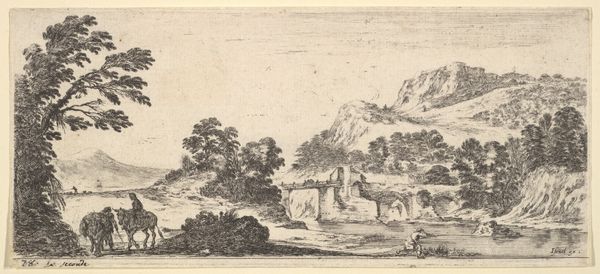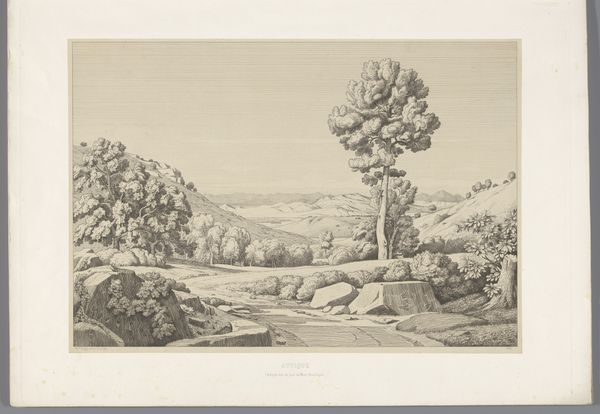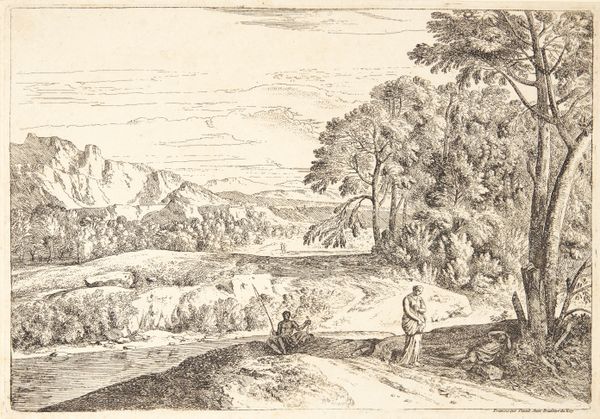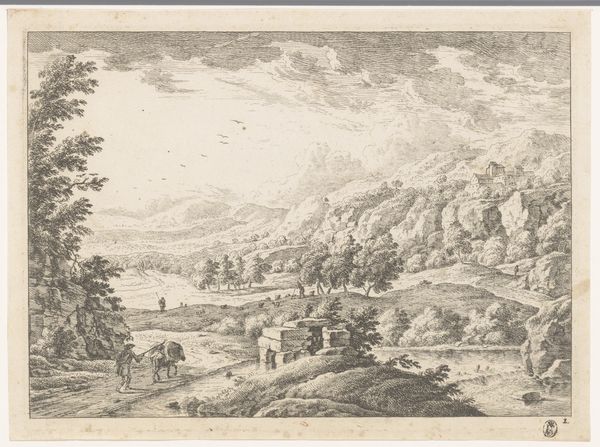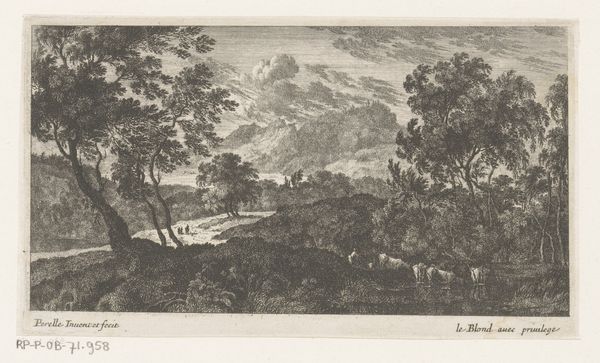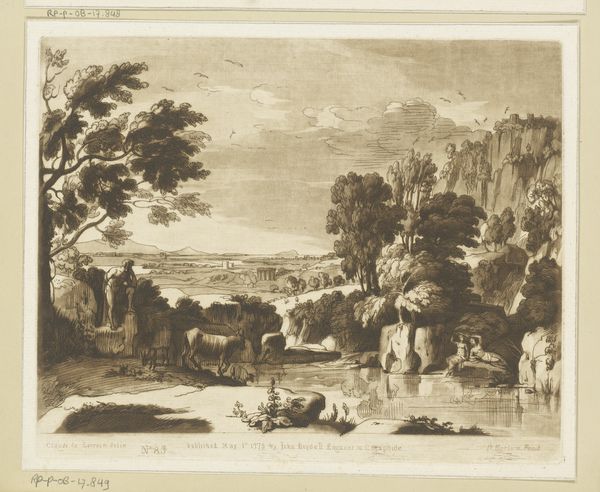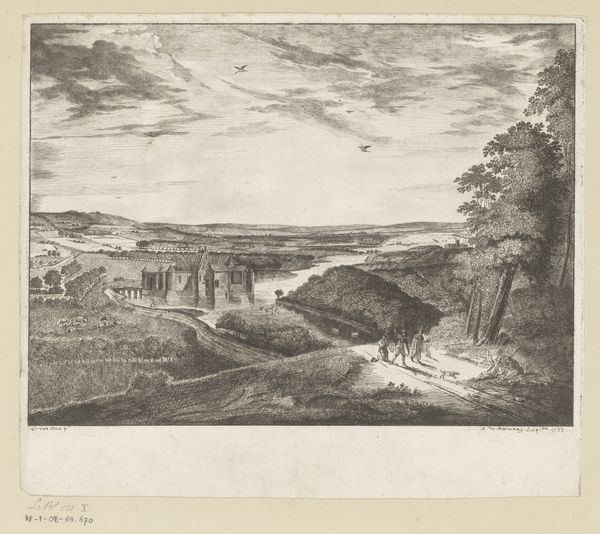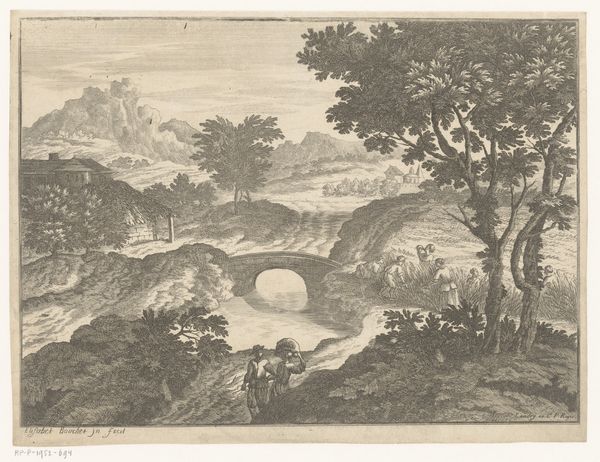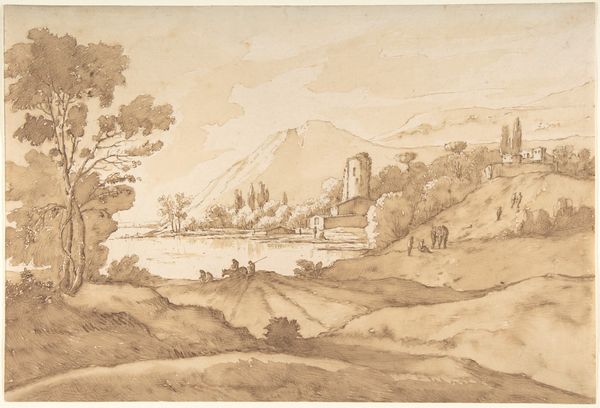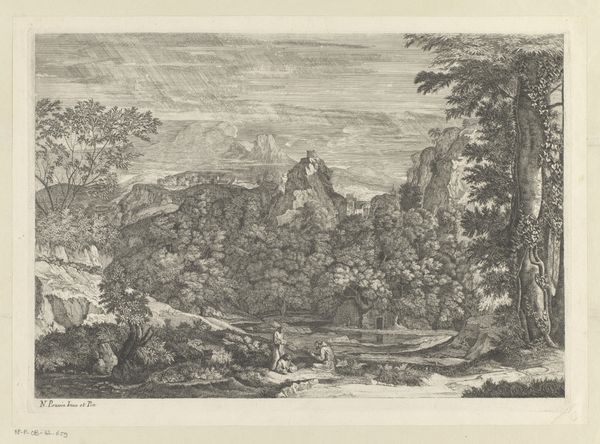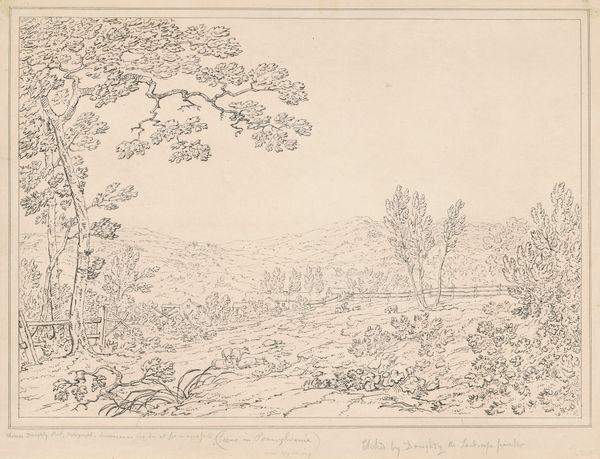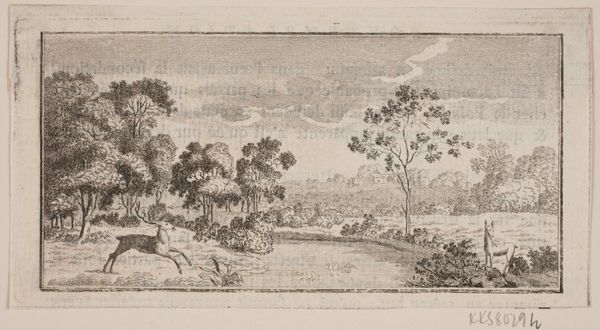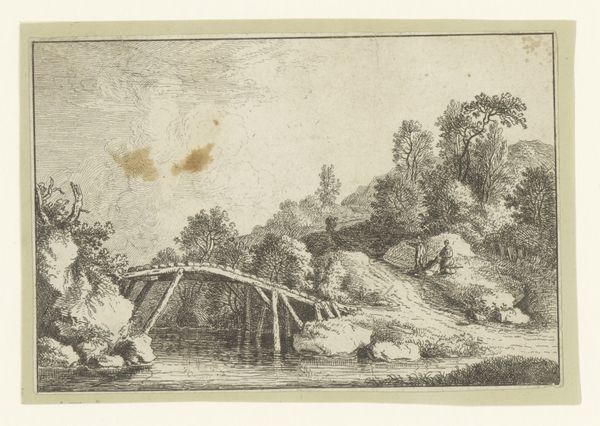
print, etching
#
pen and ink
#
baroque
#
dutch-golden-age
# print
#
etching
#
landscape
#
etching
#
figuration
#
line
#
realism
Dimensions: height 288 mm, width 403 mm
Copyright: Rijks Museum: Open Domain
Jean Pesne created this landscape with rider next to a river using etching, a printmaking technique, sometime in the 17th century. The image is defined by precise lines incised into a metal plate, which hold ink and then transfer the image to paper. The etching process gave Pesne great control over line weight and detail, evident in the textures of the trees, the flowing water, and the subtle shading that defines the landscape. Etching was closely associated with printmaking, which played a crucial role in the distribution of images during this time. The social significance lies in the accessibility of prints; they allowed for broader audiences to engage with art, democratizing the experience beyond the wealthy elite. The skilled labor involved in creating the original plate and printing each image highlights the value of craft within the fine arts, blurring the lines between unique artworks and reproducible designs. Ultimately, understanding the material and the making process allows us to appreciate the complex interplay between artistic intention, technical skill, and the social context in which this landscape was created.
Comments
No comments
Be the first to comment and join the conversation on the ultimate creative platform.
